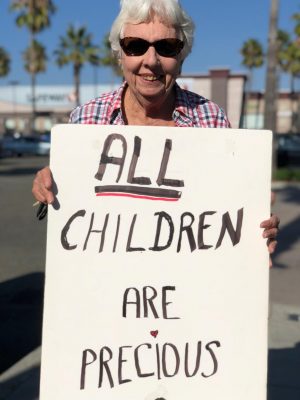Embracing the vision of bivisibility
May 15, 2019
“Just pick a side,” “you can’t like both,” “it’s a phase,” “you’re just confused.”
Bisexual people are too familiar with these phrases and more. Whether it be falsely perceiving people who identify as bisexual or ignoring them altogether, there’s a disregard for bisexuals in our society.
Given the many vague definitions of “bisexuality,” for the purpose of this article, I will be referring to it as attraction to both men and women.
Many bisexuals are not recognized, as some people tend to assume that the sexuality of a person is determined by the gender of the person they’re in a relationship with. For instance, bisexuals are viewed as straight for being in a relationship with someone of the opposite gender, or for being in a relationship with someone of the same gender.
Junior Lauren Ottley, a bisexual woman, says that when it comes to dating “you become subject to a sort of privilege because you can absolutely be straight passing if you happen to be in a straight relationship, but you know that can change as soon as you date a girl.”
One’s partner has no basis to define their sexuality. All this does is encourage false judgments. Bisexuals in straight-passing or gay-passing relationships become invisible to others because people only assume what they see.
Ottley comments, “I personally don’t love labels as a whole because I think, although helpful for education and for self-validation, they can be very confining. One adjective doesn’t describe the entirety of an object, just like one label will never describe the entirety of a person.”
Furthermore, with 25% of bisexuals never revealing their sexuality to anyone, they are often overlooked. In comparison, only 4% of gay men and women have never confided in anyone regarding their sexuality, LGBT Map reported in “Understanding Issues Facing Bisexual Americans.” These people are reluctant to come out because of negative assumptions surrounding bisexuality.
Junior Jill Lee, also a bisexual woman, says that “our society fundamentally misunderstands what it means to be bisexual. A lot of times, people assume it has to fit a certain 50/50 type of attraction to men and women, or they assume it’s just for attention, or that once you date someone of a certain gender you’re no longer bisexual.”
With more people coming out as gay or lesbian, coming out as bisexual is considered to be the new norm to some. Society is working toward being more open-minded; thus, attraction to multiple genders can be viewed as common.
However, bisexuals are still ignored in relationships. Others only recognize bisexuals if they are attracted to both men and women at the same time. This is a negative misconception as it encourages the idea that bisexuality promotes home-wrecking, which is incorrect.
Some people think that because bisexuals are attracted to two genders, they are twice as likely to be attracted to someone else while in a relationship. This stereotype is built on false logic and is false. Sexuality has no affect on loyalty in a relationship.
Ottley speculates that these stereotypes root from the “lack of understanding of the bisexual experience … There’s prejudice on both sides, gay and straight, against bisexual people for ‘not being able to choose a side’ or for just ‘wanting a lot of sex’, and these stereotypes are bulls**t. Society has an inaccurate perception of bisexuality because society largely doesn’t understand it.”
In order to reach this goal of visibility, we need to bring awareness to this topic and advocate for societal acceptance of bisexuals.
“Just showing accurate depictions in media is a good first step. A lot of times, television and movies skirt around whether a character is bisexual or not, or show them flirting with everyone because they’re just ‘flirty’ — which is yet another inaccurate stereotype about bisexuals,” Lee said.
By defeating false stereotypes and replacing them with the truth, bisexuals can finally get the visibility and validity they deserve.
“The bi flag is an incredible symbol promoting visibility that is probably underused as most people outside the LGBTQ community aren’t aware of it,” Ottley said. “Having bisexual icons is so important … Seeing stories of bisexual people in media is incredible and having real life icons is even more important. This representation becomes even more important when you start talking about bisexual males and bisexual [people of color]. Intersectionality in visibility is integral.”
It doesn’t matter which gender you prefer over the other. You are bisexual as long as you are attracted to both men and women — it’s that simple. You are still valid even if you’ve only been in relationships with one gender. People who identify as bisexual deserve visibility because they exist and belong.
“While I think more people have become comfortable with identifying as bisexual — which is a good thing — a lot of mainstream society still has to catch up, both within and out of the LGBTQ+ community,” Lee said.






